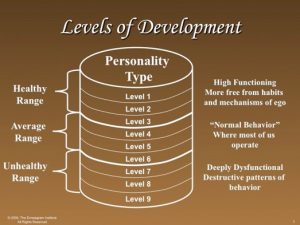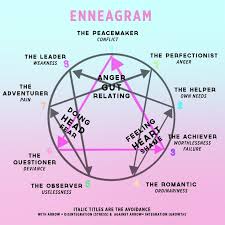
Shownotes
Wisdom-Trek / Creating a Legacy
Welcome to Day 1068 of our Wisdom-Trek, and thank you for joining me.
This is Guthrie Chamberlain, Your Guide to Wisdom
The Enneagram Type Combinations – 8&8; 8&9; 9&9 – Ask Gramps

Wisdom – the final frontier to true knowledge. Welcome to Wisdom-Trek where our mission is to create a legacy of wisdom, to seek out discernment and insights, and to boldly grow where few have chosen to grow before.
Hello, my friend, I am Guthrie Chamberlain, your captain on our journey to increase wisdom and create a living legacy. Thank you for joining us today as we explore wisdom on our 2nd millennium of podcasts. This is Day 1068 of our trek, and it is time for our Philosophy Friday series. Each Friday we will ponder some of the basic truths and mysteries of life and how they can impact us in creating our living legacy.
As we continue on this trek called life, sometimes we have questions about life, so our Friday trek is a time when we can “Ask Gramps.” Gramps will answer questions that you would like to ask your dad or granddad, but for whatever reason are unable to. No matter how old we are, I know that all of us would like the opportunity to ask Dad or Gramps questions about life in many areas.
Understanding ourselves and how others may interpret life through their paradigm better allows us to interact with each other with more love and compassion. This can be achieved by utilizing a profound tool called “The Enneagram.” The tool that we refer to as the Enneagram (Any-a-Gram) is a circle with nine interconnected points (“Ennea” refers to 9 and “gram” refers to a drawing). I have included a One Page Enneagram Summary created by Beth McCord. If you would like to download this graphic, click on the picture in today’s Wisdom Journal.
For additional insight, I recommend the book The Road Back to You written by Ian Morgan Cron and Suzanne Stabile. It is an excellent book about an enneagram journey to self-discovery from a Christian perspective.
We have concluded our deep dive into the nine types which are “The Reformer,” “The Helper,”“The Achiever,” “The Individualist,” “The Investigator,” “The Loyalist,” “The Enthusiast,” “The Challenger,” and “The Peacemaker.” Fourteen weeks ago, we began a series of episodes on Type Combinations, answering the question, “What are the potential relationship benefits and issues with each combination?” Covering all of the 45 different potential type combinations will take several weeks, but will be valuable in understanding each other, regardless of what type you are and what type those with whom you interact with each day are.
Since we are exploring the Enneagram in detail, I would also recommend reading the Wisdom Journal for each Friday to see the diagrams presented each week. As helpful as the Enneagram is, keep in mind, it is still only a tool and cannot replace or usurp the precepts that are found in God’s Word. All decisions and actions that we make in life must be in harmony with God’s precepts.
So the questions for the next several weeks will be…
“Hey, Gramps, why do people act and react to situations and circumstances in life so differently? How can I gain wisdom to better understand myself and others so that I can love, serve, and minister to them on a deeper level?”

The Enneagram Type Combinations
Enneagram Type Eight (the Challenger)
with
Enneagram Type Eight (the Challenger)
What Each Type Brings to the Relationship
As with all double-type relationships, two Enneagram Eights generally bring the same qualities to each other. Therein lies both a main source of the attraction as well as one of the main pitfalls. Thus, the level of health of each person is especially important for these types of relationships as are their dominant instincts. Both Eights will bring a lot of energy, vitality, and passion to the relationship. Few other combinations are so intensely involved with each other as this, nor are they able to create such fireworks. They both have strong willpower, independent thinking, the ability to make decisions and get things done, and a desire to see results in the practical world: they will not simply talk about building a house or going on vacation—they will make it happen.
When two Eights are well matched, they paradoxically both stimulate each other and relax each other at the same time. They feel that their energy has been met, so they can relax around the other Eight and turn their attention and energy toward other interests. Two Eights are also able to profoundly relax each other because they have confidence in each other. They know that they have what it takes as a team to do what needs to be done to be safe, secure, and stable in their own world. The feeling is “we’ve got it covered.” Rather than be marked by high energy, quiet confidence is a hallmark of a double Eight couple. This is because they are relieved (and quietly happy) to have found someone else strong who they can depend on. This also leads to a profound feeling of mutual respect, direct and frequent communication, the ability to air their needs and feelings, and the capacity to settle their occasional disagreements cleanly and quickly. Double Eight pairs can build a significant empire of some sort together, and because they feel that they have unshakable support in the other, they can also be generous and open-hearted with others.
Potential Trouble Spots or Issues
A double Eight combination will be extremely volatile, with lots of ego on display, frequent tests of wills and more or less open jockeying for control. They can get into competitions and rivalries because real equality and sharing is difficult between a lower functioning double Eight couple. Issues about being (and staying) in control will likely be the center of many conflicts, especially since lower functioning Eights do not want to back down or be seen as weak in any way. Both will, therefore, struggle to dominate, at least in some area, making for a highly reactive and conflict-ridden relationship.
Both Eights can have hair-trigger tempers, and a certain degree of suspiciousness and paranoia might set in, even in regard to their partner. Tests of loyalty will come from both sides, and both will tend to up the ante emotionally (and often sexually and financially) as things deteriorate. Nevertheless, someone will always need to make the final decision, and unless they learn how to communicate and negotiate effectively with each other, this combination can wear each other down. Both Eights tend to feel rejected unless they have the power, money, or position that would make their significant other want or need them. They may feel free to disparage the other, justifying their aggressiveness with the attitude that they can take it. Verbal and physical rough-play can get out of hand. Neither will be the first to back down in a conflict, and it is very difficult for them to apologize.
Nevertheless, Eights can be surprisingly thin-skinned and easily hurt, resulting in the banishment of others often over seemingly trivial matters. Further, two Eights can also find that they tend to take up a lot of space—and therefore to need a lot of room with each other. They may find it worthwhile to declare certain parts of the house (or similar territory) off-limits to the other. In short, there is often too much bluntness and pushing each other around which can escalate into outright battles. Power struggles become occasions for revenge by the one who feels aggrieved, or they may simply take turns hurting each other as they continue to wear each other down until “the final straw” has been reached.

Enneagram Type Eight (the Challenger)
with
Enneagram Type Nine (the Peacemaker)
What Each Type Brings to the Relationship
Enneagram Eights bring leadership qualities—a take charge, “we can do it” mentality that others usually look up to and rely on. They are full of self-confidence and vitality and feel like a force of nature that cannot be denied. Nines generally admire these qualities in Eights and often gravitate to them. Nines typically tend to live vicariously through the positive qualities of the other, and Eights like to have people around who are impressed and stimulated by the Eight’s leadership, vitality, and brashness. Nines genuinely admire the Eight’s ability to make things happen and to fearlessly take on challenges.
On the other hand, Nines bring a sense of calm and stability that Eights find soothing and necessary for their wellbeing. They also bring to Eights a feeling of quiet pride in the Eight’s bravado and more assertive qualities, encouraging Eights to continue in their take-charge style. Even healthy Eights invest a lot of time overcoming obstacles and adversity; they are fighters trying to survive and make their mark on the world. Nines are like a safe harbor, a respite, a person with whom Eights can let down their guard and relax. They tend therefore to teach each other what the other lacks: Eights bring Nines self-confidence and self-assertion, while Nines teach Eights which battles are worth fighting for and how not to push so hard. The Eight/Nine couple is thus like fire and water—an active force and a receptive force—that has an archetypal feeling about it. Their roles are well-defined with each playing a parenting role toward the others—one is usually the daddy while the other is the mommy—although this does not go along gender lines as might be expected. Both have powerful drives and strong willpower; both like comfort and simplicity; both want to create a safe retreat from the world. When these forces and their talents are harnessed together after the same goals, this pair can be dynamic and powerful but also comfortable and receptive at the same time.
Potential Trouble Spots or Issues
One of the main problem areas for people of this combination is that, as they deteriorate, their defenses go in opposite directions: Eights tend to push harder, while Nines tend to increasingly shut down. Nines can become unresponsive, or worse, energetically push away the Eight as a defense. Eights become more aggressive and belligerent, demanding that their energy be met. Nines respond by not responding: they go on emotional strike, and may begin to react passive-aggressively, sabotaging the Eight’s activities in various ways. This causes Eights to escalate berating and threatening the Nine, or else to encourage Eights to react passive-aggressively.
Eventually, Eights tend to lose interest in Nines, feeling that they are too obstructionist to them and their plans. Whenever Eights want to do something exciting, Nines respond with “Why bother?” or its equivalent. Eights can not only feel thwarted in their vision but also feel that one of their core strengths is being undermined or rejected. On the other hand, Nines can begin to see lower functioning Eights as too bossy and controlling, selfish and wanting everything to be their way. (Nines think that they want someone to be in charge and to direct things, but when Eights start directing them, they rebel and become stubborn.) Eights think Nines are blank slates who could be molded to their needs—and they get surprised by the depth and power of the Nines stubbornness.
The relationship often founders on rage whether expressed openly or covertly. Nines often feel that Eights are too openly aggressive and harsh with others in order to maintain their dominance. They may begin to have to take sides to protect their children or others who are vulnerable to what they see as the hardness and potential violence of Eights. At its worst, this archetypal, elemental combination can deteriorate into a domestic battlefield with frequent verbal and physical abuse.

Enneagram Type Nine (the Peacemaker)
with
Enneagram Type Nine (the Peacemaker)
What Each Type Brings to the Relationship
As with all double-type relationships, two Enneagram Nines generally bring the same qualities to each other. Therein lies both a main source of the attraction as well as one of the main pitfalls. Thus, the Level of health of each person is especially important for these types of relationships as are their dominant instincts. One of the most common same-type pairs, double Nine couples are invariably quiet, gentle, supportive of each other and of those around them, comfortable to be around and hospitable to others. They are easy-going and do not let the minor irritations of life or of the relationship get to them easily. They tend to look positively on their life circumstances, whatever they are, making the most of whatever they have. They are patient with each other and give the other partner the benefit of the doubt, being quick to forgive if there have been spats or conflicts, generous and steady in their emotions and habits. They give each other lots of space, undemanding, non-judgmental attention, and a good deal of affection. Both feel that the other is a kindred spirit who can be curious and adventuresome, although not too much so.
Little deeply rocks, or even threatens, the world of a double Nine couple. They are typically people who enjoy regularity and predictability, the pleasure of the familiar and the tried and true. For example, most double Nine couples tend to go to the same restaurant or to the same vacation spot over and over again once they have found something they like. While being friendly and approachable, they are also surprisingly domestic and protective of their family and their private world. This pair wants to create and maintain a safe haven from life’s ups and downs. Importantly, both feel unpressured by their relationship. The lack of pressure and stress in their ordinary interactions is one of the main attractions of this relationship. Neither one wants to feel put upon—they both want to take life at their own pace. Mellowness (with a certain feistiness and zippiness, depending on the instinctual pattern) is the hallmark.
Potential Trouble Spots or Issues
The very steadiness and regularity of a double Nine couple is also part of what could be their Achilles’ heel: the fear of rocking the boat or of allowing anything to intrude on the peace and harmony of their world. They can seem to be friendly but get stuck in doldrums, gradually dropping social connections. The outside world, other people, even family members, can be subtly resisted or neglected in various ways if the Nine couple feels sufficiently threatened in some way. Double Nine couples can be so bound to their desire for harmony that they also find it difficult to raise important issues to the other. They might well love each other, but very little real communication begins to take place. Most of it is non-verbal or worse, exists only in their imaginations.
In fact, as Nines deteriorate, they idealize the other but do not really relate to the other as he or she is. Most of the relationship occurs in their imagination of the other rather than from being in contact with the real person. Much is not expressed, and they can get into deadening routines that are difficult to break. They tend to avoid conflict by not bringing up threatening topics, leading to a build-up of old tensions and resentments. Passive-aggressive behavior, worrying, blaming, and bubbling anxieties can start to undermine the relationship if they continue to avoid speaking about how they really feel. Outwardly, they may seem like a great, natural match, giving each other lots of space and seeming to have an unusual ability to get along with each other. But they can actually be suppressive of each other in subtle ways, leading to a gradual deadening of vitality, a lack of ambition, and a masked depression with nothing, in particular, standing out as an obvious cause. Often double Nine couples find a way to coexist in a mutual non-aggression pact that allows them to leave each other alone. However, the joy and excitement will have long evaporated from the relationship as the couple settles into more and more deeply entrenched routines and avoidances.